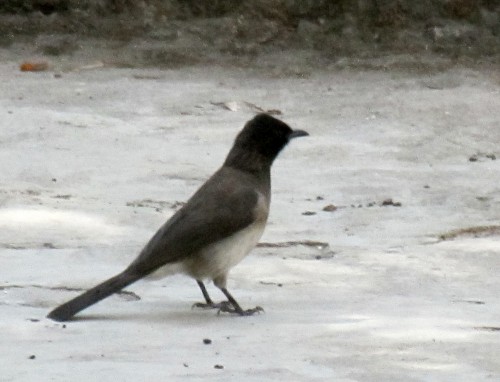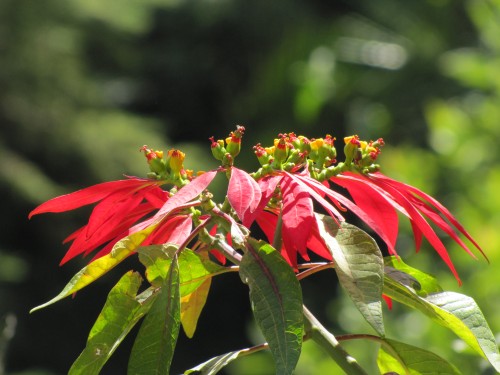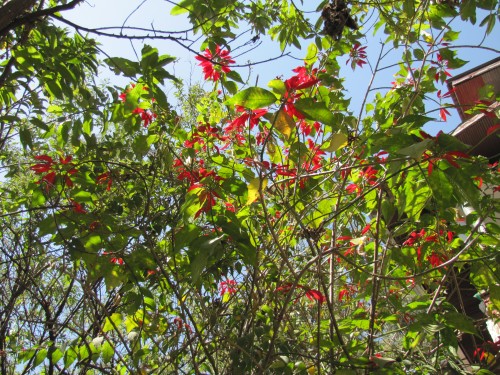Cattle Egrets and a little donkey
During our visit to Ethiopia last December we hired a driver to take us through some of the rural areas north of Addis Ababa. We drove just over 100 kilometres to a locality known as Portuguese Bridge. On the way we only stopped once so the opportunities for birding were minimal and photography quite difficult.
The above shot was one taken as we were travelling along in the mini bus at about 90kph. It shows a typical rural scene in that part of the country. My attention was focussed on the birds in the scene, a small flock of Cattle Egrets feeding in the paddock. (Click on the image to enlarge.) Cattle Egrets seemed quite common in the areas we travelled in rural Ethiopia. Later we found this also to be true of Morocco and Spain.
A short distance further on we saw the small donkey shown below pulling an enormous load of grass. These amazing little beasts of burden are obviously very strong. Donkeys are common throughout this part of Ethiopia. Even in the city drivers must be on the lookout for them everywhere.
Surprised by a Kite
Sometimes – no, make that often – nature photography can have its frustrating moments. Take the two photos on today’s post. We were having a picnic lunch at Portuguese Bridge, just over 100km north of Addis Ababa in Ethiopia. Around us and other visitors to the area we saw a dozen or so Yellow-billed Kites soaring around and swooping low over where people were eating. They were actually causing some distress to others but I thought it a good opportunity to get some practice at shooting birds in flight.
The above photo was one attempt, but I only managed to get part of the bird in the frame. At least it is more or less in focus! The photo below fills the frame, but is out of focus. The problem here was the slight delay between getting it in the viewfinder and the camera actually responding to the focussing mechanism. It’s challenging trying to do this and I have had varied success. When it comes off it’s great. Many other times it is frustrating.
On a more interesting note, one of the birds caught me by surprise, much to the delight and amusement of our picnic group. One of our party J and I were sitting near the edge of the cliff having lunch. The view over the Blue Nile Gorge was impressive, plummeting some 1000 metres to the river below. The kites kept circling menacingly. I said to J, “If I hold this piece of my bread roll up…” Before I’d finished the sentence, one of the kites swooped down and snatched the food out of my outstretched hand!
The offending kite left a scratch mark on my finger but I’m not sure if it was a talon or its beak. After that we retreated under the cover of the nearby veranda to finish our meal without harassment, only to have a local cat smooching up for a handout. Despite all this “drama” the meal was great and the view inspiring. Kind of made up for my photographic blunders.
Tacazze Sunbird, Addis Ababa
The Tacazze Sunbird was one of the more spectacular birds I saw in Ethiopia. In its adult breeding plumage it has a deep violet and iridescent colouring but the individuals I saw were mainly in the immature stage or non-breeding plumage, like the bird shown in these photos, taken in a private garden in suburban Addis Ababa.
Several others I saw in the gardens of the school where my daughter was teaching had some colouring, but they were so elusive I struggled to get good photos.
Common Bulbul, Addis Ababa
During our recent stay in Ethiopia we went to visit a silk outlet in suburban Addis Ababa. This shop was in a private home with an extensive garden. It was a delightful spot and quite the ideal retreat from the rush of a crowded city. While our wives were buying some lovely items from the shop, Brett and I meandered through the garden taking in the serenity. The beautiful garden naturally attracted a range of local birds, including the Common Bulbul shown above.
The view I had was only fleeting; just enough time to capture this rather poor photo, but good enough for a positive ID. My research has revealed that it is a common species throughout Africa. You guessed it – I never saw this species again! Such is the birding life. Common Bulbuls inhabit a wide range of environments, including thick undergrowth, gardens and parks. This species eats fruit, nectar and insects.
Australia only has one species of bulbul, the introduced Red-whiskered Bulbul (click for a photo).
Below I have included several photos taken in the gardens.
Thick-billed Ravens, Addis Ababa
One of the bird species I recorded on only a few occasions during my two week stay in Ethiopia last December was the Thick-billed Raven. Only once did I manage to get a few photos of this species, shown here today on this post. They were very easily distinguished from the locally common Pied Crows by being almost completely black except for a white patch on the nape. They are considerably bigger than the Pied Crow too. Their thick bill is hard to miss and is diagnostic.
Along with the Common Raven, they are the largest in the corvid family of birds (click here for a definition). They are found only in the Horn of Africa (Ethiopia, Eritrea and Somalia). Their diet is quite varied, and being omnivorous they will eat insects, beetles, carrion, meat scraps and a range of human foods.












